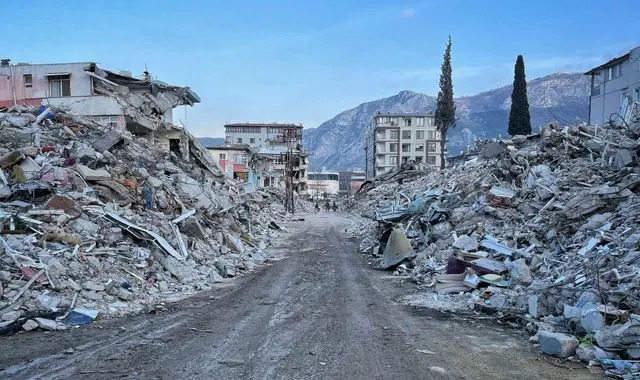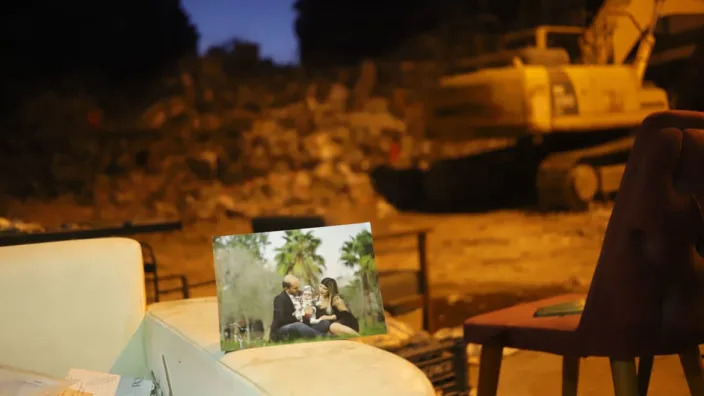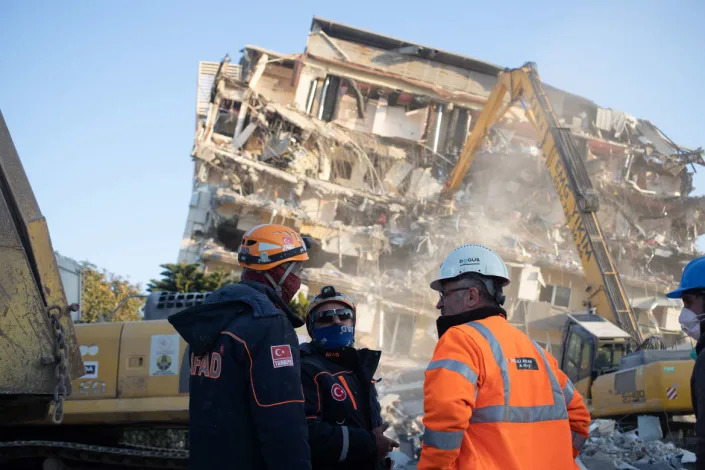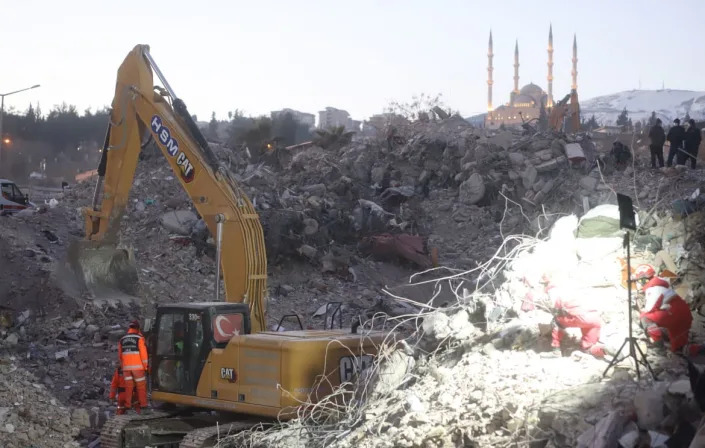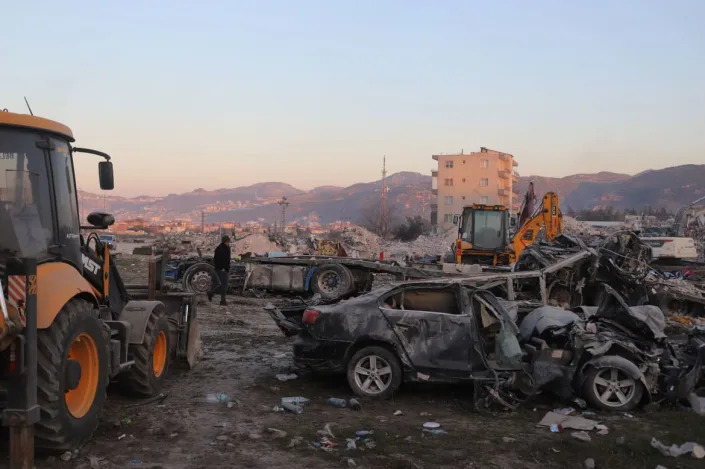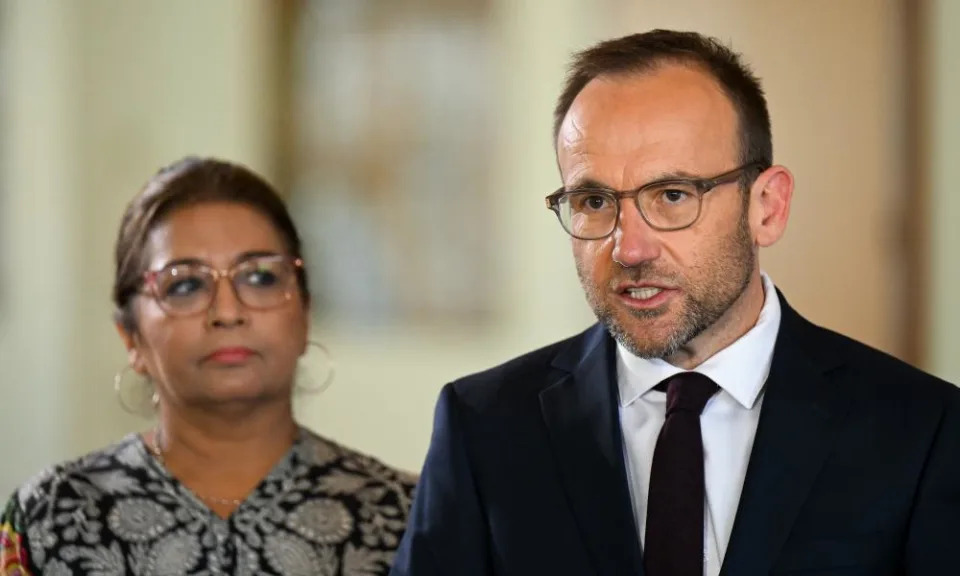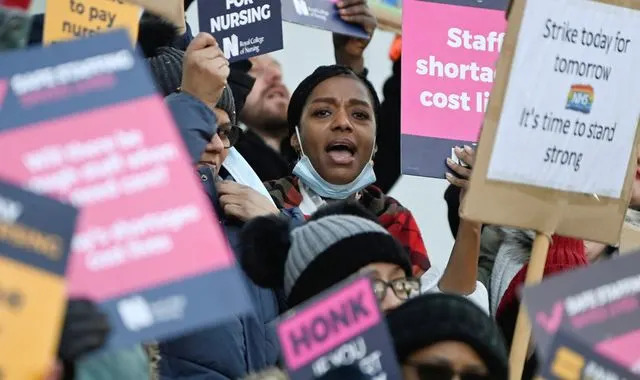Nada Hassanein, USA TODAY
Tue, February 21, 2023
Days before the new year, Angela King woke up to a nauseating scent of rotten egg wafting through her neighborhood in southwest Houston.
The smell was a reminder of how close she lives to a storage facility bearing 300,000 gallons of liquid propane. And now, CenterPoint Energy plans to install natural gas pipeline transmission lines 4 feet underground. Initial construction will be just 50 feet from her home, King said.
King has lived in Southwest Crossings, a mostly Black and brown neighborhood, for two decades, and she and her neighbors have protested the construction, fearing for their health and safety. Propane and natural gas are highly flammable and come with risks of leaks, fires and explosions at facilities and pipelines.
And their neighborhood – situated in the energy capital of the nation – isn’t alone.
Evidence shows that throughout the U.S., communities of color are more likely to be burdened by various industry infrastructure, disproportionately jeopardizing the health of Black and brown people. Experts say Houston and the pipeline project are microcosms of the nation’s persistent environmental racism that subjects people of color to hazards.

Angela King poses for a portrait at her home in Southwest Crossings in Houston, Texas. CenterPoint Energy plans to install a natural gas pipeline transmission lines 4 feet underground in her neighborhood with initial construction just 50 feet from King's home.
Black people are 75% more likely to live near industrial facilities in “fence line” communities, according to Fumes Across the Fence-Line, a 2017 Clean Air Task Force and NAACP report on air pollution from oil and gas facilities.
Meanwhile, the Biden administration has taken an unprecedented approach to center environmental justice as part of its agenda to acknowledge how industry, climate and disaster has a disproportionate impact on communities of color.
The administration has launched efforts across multiple federal agencies, which includes the Justice40 Initiative that aims to invest 40% of federal climate, housing, clean water and other benefits in historically underserved communities.
And last month, the Environmental Protection Agency announced it was awarding $100 million in environmental justice grants to communities overburdened by pollution.
The investments couldn't be more urgent for communities like King’s Houston, which was the subject of the widely cited environmental justice study by Robert Bullard, founder of the Bullard Center for Environmental and Climate Justice at Texas Southern University. The study, published 40 years ago, found waste disposal facilities were more likely to be in Houston’s Black communities.
And last year, the U.S. Justice Department started an investigation into the city for illegal dumping of solid waste in Black and Hispanic communities.
The “genesis of environmental justice research was in Houston," said Joan Casey, an environmental epidemiologist at the University of Washington and the Columbia Mailman School of Public Health. "Now we're in 2023, we're still having this same conversation. This is the way that we've operated in the United States for a very long time.”
Pollution: EPA would change soot standards for first time in 10 years
Gas stove ban: Are natural gas stoves actually a 'hazard'?
What is propane? And why are pipelines dangerous?
Propane, which is derived from natural gas and oil refining processes, is considered a cleaner, low-carbon fuel when used to heat and cool buildings and for transportation, among other uses. But in high concentrations, it can cause suffocation and cardiac arrest. Natural gas can also cause suffocation, as well as gas poisoning.
Acute dangers are the biggest concerns. Because propane is heavier than air, when released it settles lower to the ground than natural gas, which leads to increased risk of ignition, fire and explosion. Even a small leak can pose a high risk of fire.
Natural gas is almost entirely methane gas, which contributes significantly to climate change.
CenterPoint told local media the smell King and her neighbors woke up to around Christmastime wasn’t a leak but a part of normal operations.
In response to a USA TODAY inquiry about the incident, a spokeswoman said that the company is "committed to the safe, reliable operations of our energy systems" and that "communication with the communities we have the privilege of serving is a top priority for our company."
Still, King fears future accidents.
Last year, the Pipeline and Hazardous Materials Safety Administration reported 10 deaths and 24 injuries from pipeline incidents across the U.S.
Over two decades, an average of 640 incidents occur each year. Incidents are defined as leaks that result in at least $122,000 in property damage, gas loss of at least 3 million cubic feet, injury, death or emergency shutdown, according to federal regulations.
In 2011, a CenterPoint Energy gas line in Minneapolis exploded. No one was injured, but vehicles were destroyed and the city filed a lawsuit against the company.
In 2018, dozens of homes in northeast Massachusetts were destroyed and one man was killed in a natural pipeline explosion. Pressure readings showed 12 times normal standards, and the Leonel Rondon Pipeline Safety Act, named after the victim, was passed in 2020 in hopes of increasing safety standards.
What's happening in Houston?
Texas is the top producer of natural gas in the country and has the most crude oil refineries of any state. The Houston metro area has more than 180 pipeline transmission systems.
Southwest Crossings residents have held protests at the site and have been pushing back since 2020, when King said homeowners were first notified of the storage facility project.
But residents say that COVID-19 interfered with timely correspondence and that the letters were in English despite many residents being Spanish speakers. Hispanic people make up more than 60% of the community, and roughly a third of residents are Black, according to estimates from the U.S. Census American Community Survey.
The company said it sent letters again the next year. And in July 2022, King received a letter from the company asking for her easement along with a $9,000 compensation offer for pipeline construction 50 feet from her fence. Two months later, she received a notice that the company would begin construction by eminent domain.
She worries for her son and two middle-school-aged nephews who live with her and the schools and churches in the subdivision.
"It makes me feel ignored, as if I am not even a human – that they're walking all over me as if I do not matter. That my voice is nonexistent," said King, 55, who is medical billing and coding worker.
She and community activist Brittney Stredic, 28, have met with city officials and the company to demand detailed safety plans. They’ve started a petition and website to spread awareness of their concerns.
CenterPoint said it has several safety strategies in place at the storage facility, and it shared them with residents. Those plans include an alarm system; smoke, gas and flame detection; and emergency shutdown protocols.
The pipeline project is set to be completed by the end of the year. The company proposes to install the pipelines at least 4 feet underground.
“We are following federal code to install the pipeline to meet or exceed the requirement established for this type of installation,” the company told USA TODAY in a statement. “CenterPoint Energy representatives have participated in multiple community meetings and have attempted to meet via phone and/or face-to-face with all the area residents.”
But Stredic said she felt the plans didn’t consider the neighborhood she has called home her whole life.
“To me, there was never a consideration about the community that they were placing it in,” she said. “That endpoint is a business.”
A spokesperson for CenterPoint Energy said the system will traverse many neighborhoods, "both affluent areas and underprivileged areas."
"Regardless of the location in our service territory, our decisions when evaluating new construction projects or system enhancements are based on several key criteria: If CenterPoint Energy owns the property or has easement rights; proximity to area that will be served by our equipment or facility; technical and existing natural gas distribution system design considerations as outlined previously; and optimization of our system operations. We do our best to treat all our customers fairly and equitably," spokesperson Alejandra Diaz wrote.
City officials referred comments to CenterPoint Energy, but a spokeswoman confirmed the city "was made aware of the residents' concerns."
Residents’ concerns ‘based on science’
Experts say residents’ fears reflect the reality of a wide range of environmental hazards disproportionately faced by communities of color across the nation.
In a study published last year in the Journal of Exposure Science and Environmental Epidemiology, Casey and a team of researchers found that formerly redlined neighborhoods were twice as likely to be oil and gas well sites and showed how federal policies continue to fuel structural racism.
“Their concerns are based on science. I wouldn't want this facility in my neighborhood,” Casey said.
Ryan Emanuel, an environmental justice expert and hydrologist at Duke University’s Nicholas School of the Environment, has studied natural gas pipelines and their locations in relation to communities. The Great Plains are home to Indigenous communities often subjected to oil and gas industry infrastructure, but Emanuel also studied the issue in states like North Carolina, where he found a quarter of all American Indians in the state lived within the area of the Atlantic Coast pipeline project plan that folded in 2020.
In another study published in 2021 in the journal GeoHealth, Emanuel and his team found that counties with higher social vulnerability factors such as low income also had greater pipeline densities.

Researchers mapped pipelines and social vulnerability. Natural gas gathering and transmission pipelines in the mainland U.S., with social vulnerability index shown for each U.S. county. Yellow indicates high social vulnerability. One Alaska county is included in the statistical overview of the results but is not shown here.
“Those are places that don't have the ability to deal with disaster, public health issues or have limited resources to recover when things go wrong. These are the communities that are saddled with more of this harmful and polluting infrastructure,” he said.
Though that study focused on interstate natural gas pipelines, Emanuel said the findings echo the larger issue.
"It's a bigger picture that's related to the decisions that we make about energy and public participation in decision-making process,” he said. “It's not a collection of anecdotes. This is the result of our public policies and corporate policies, frankly, over many decades.”
Reach Nada Hassanein at nhassanein@usatoday.com or on Twitter @nhassanein_.



